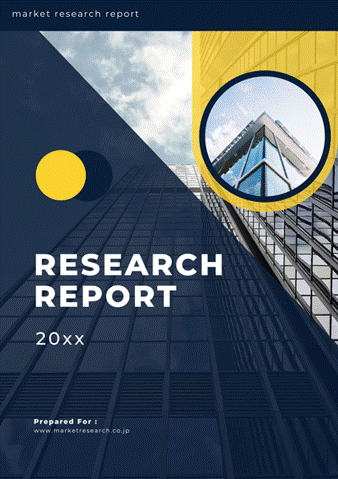 | • レポートコード:D0-MOR-AP1066 • 出版社/出版日:Mordor Intelligence / 2020年4月20日 • レポート形態:英文、PDF、110ページ • 納品方法:Eメール(受注後2-3営業日) • 産業分類:食品&飲料 |
| Single User | ¥629,000 (USD4,250) | ▷ お問い合わせ |
| Team User | ¥703,000 (USD4,750) | ▷ お問い合わせ |
| Corporate License | ¥1,110,000 (USD7,500) | ▷ お問い合わせ |
• お支払方法:銀行振込(納品後、ご請求書送付)
レポート概要
| 本調査レポートは、大豆飲料の世界市場について調査・分析した資料で、大豆飲料の市場概要、動向、セグメント別市場規模、地域別分析、競争状況、企業情報、市場機会分析などで構成されています。 |
Market Overview
Global soy beverage market is projected to record CAGR of 6.1% during the forecast period (2019-2024).
– Soy-based products are thriving segment of food and beverages industry as it is gradually becoming a significant part of our diet. Moreover, soy-based products form a prominent source of nourishment for millions of livestock.
– Soy-based products are considered to be rich in nutritious content especially in carbohydrate, protein, omega 3 – fatty acid and contain no cholesterol. Owing to this these products are gaining popularity among health-conscious consumers.
Scope of the Report
Global soy beverages market can be segmented by type which is classified as soy milk and yogurt smoothies. They are highly recommended for the lactose intolerant or dairy allergic population. The protein content in soy milk is equivalent to that of cow milk but, unlike cow milk, soy milk has little amounts of saturated fats and no cholesterol. On the basis of distribution channel the soy beverages market is classified as supermarkets/hypermarkets, pharmacy, retail stores, convenience stores, and others. Moreover, the study provides an analysis of the soy beverages market in the emerging and established markets across the world, including North America, Europe, Asia-Pacific, South America, and Middle East & Africa.
Key Market Trends
Rising Health Concern Increased the Consumption of Soy based Products
Soy beverages are consumed because of the increased availability of soy, and the scientific facts that proves many health benefits of the beans; including lowering blood cholesterol and reducing the risk of certain cancers. Additionally, soy beverages are consumed as a replacement for lesser-healthy drinks because of its nutrition content. Soybean-based foods, apart from being a complete source of protein, also contain other important nutrients, such as fiber, B vitamins and omega3 fatty acids. All these nutrients play an important role in the growth of infants, fetal growth in pregnant women, and provide various other benefits for children and adults alike. The rising health consciousness in the developing and developed regions is driving the soy beverages market.
Asia-Pacific holds the Major Share in Soy Beverages Market
Asia-Pacific has the highest market for soy beverages due to the rising disposable incomes and the demand for processed foods. It is followed by fast-growing markets like North America and Europe. With increasing lifestyle diseases and aging population in North America, consumers are drifting towards functional foods offering a broad spectrum of health benefits. The demand for soy beverages is also increasing in the developing regions of South America and Africa because of rising health concerns. The growing demand for soy-based products in the developing regions of South America and Africa provide a huge platform for the players to increase their presence and thus, increase their market share.
Competitive Landscape
The introduction of new soy beverages provides a massive platform for the development of this growing market. Some of the major key players of the global soy drinks market includes Danone, Organic Valley and Kikkoman Pearl Soymilk, amongst others.
Reasons to Purchase this report:
– The market estimate (ME) sheet in Excel format
– Report customization as per the client’s requirements
– 3 months of analyst support
1 INTRODUCTION
1.1 Study Deliverables
1.2 Study Assumptions
1.3 Scope of the Study
2 RESEARCH METHODOLOGY
3 EXECUTIVE SUMMARY
4 MARKET DYNAMICS
4.1 Market Drivers
4.2 Market Restraints
4.3 Porter’s Five Force Analysis
4.3.1 Threat of New Entrants
4.3.2 Bargaining Power of Buyers/Consumers
4.3.3 Bargaining Power of Suppliers
4.3.4 Threat of Substitute Products
4.3.5 Intensity of Competitive Rivalry
5 MARKET SEGMENTATION
5.1 By Product Type
5.1.1 Soy Milk
5.1.2 Soy-Based Drinkable Yogurt
5.2 By Flavor
5.2.1 Plain Soy Beverages
5.2.2 Flavored Soy Beverages
5.3 By Distribution Channel
5.3.1 Supermarkets/Hypermarkets
5.3.2 Pharmacies/Drug Stores
5.3.3 Online Retail Stores
5.3.4 Convenience Stores
5.3.5 Others
5.4 Geography
5.4.1 North America
5.4.1.1 United States
5.4.1.2 Canada
5.4.1.3 Mexico
5.4.1.4 Rest of North America
5.4.2 Europe
5.4.2.1 United Kingdom
5.4.2.2 Germany
5.4.2.3 France
5.4.2.4 Russia
5.4.2.5 Italy
5.4.2.6 Spain
5.4.2.7 Rest of Europe
5.4.3 Asia Pacific
5.4.3.1 India
5.4.3.2 China
5.4.3.3 Japan
5.4.3.4 Australia
5.4.3.5 Rest of Asia-Pacific
5.4.4 South America
5.4.4.1 Brazil
5.4.4.2 Argentina
5.4.4.3 Rest of South America
5.4.5 Middle East & Africa
5.4.5.1 South Africa
5.4.5.2 Saudi Arabia
5.4.5.3 Rest of Middle East & Africa
6 COMPETITIVE LANDSCAPE
6.1 Most Active Companies
6.2 Most Adopted Strategies
6.3 Market Share Analysis
6.4 Company Profiles
6.4.1 Danone SA
6.4.2 Organic Valley
6.4.3 Kikkoman Pearl Soy Milk
6.4.4 The Hain Celestial Group
6.4.5 Eden Foods
6.4.6 ZenSoy
6.4.7 Trader Joe’s
6.4.8 Jaffe Bros. Natural Foods
6.4.9 Devansoy
7 MARKET OPPORTUNITIES AND FUTURE TRENDS